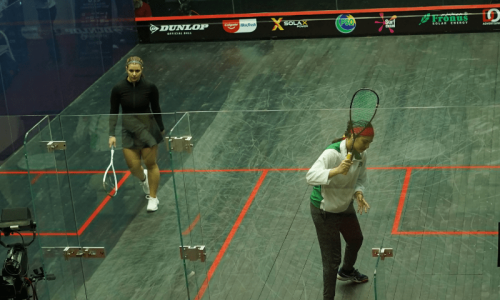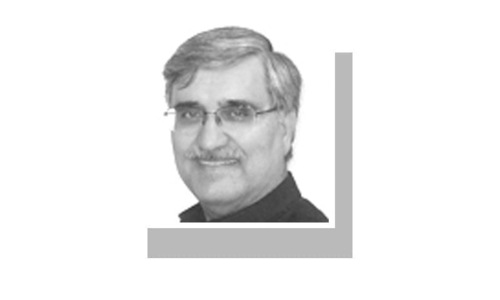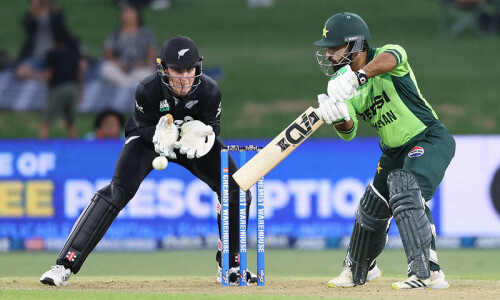IN 2023, Pakistan’s seventh Population and Housing Census identified 48.51 per cent of the country’s population of 241.49 million — ie, nearly 117m people — as female. Two years prior, the Pakistan Labour Force Survey 2021, had found that 49.38pc of the country’s 159.8m working age population — ie 78.91m people — comprised women and girls more than 10 years of age. However, the Survey had also found that only 19pc of the female working age population — ie, 15.34m people — which equals 13.1pc of Pakistan’s female population and 6.35pc of its total population — were active participants in the economic life of the country.
In simple terms, these numbers mean that although females comprise half of Pakistan’s population and half its working age population, only a very small fraction directly contributes to the country’s economic growth. At times this gap is dismissed by reference to the overall lack of economic opportunities in the country for both men and women; at others, it is blamed on the range of social, cultural and religious reasons that hold women back even against their will; and yet at others, it is laid at the door of women themselves who are deemed happy to live off the earnings of the men in their lives and uninterested and unwilling to earn their own livelihood.
Significant as these statistics or the explanations provided for them may be, they overlook a fact well-known to those engaged in manufacturing, advertising and selling products ranging from textiles to home appliances to spices: that women, whether they generate income in their own capacity or rely on income generated by others, or whether they buy items for themselves or for members of their families, are a critical component of Pakistan’s consumer base and contribute to the economy indirectly by their purchasing and spending activity.
However, there is considerable anecdotal evidence that women often lack the autonomy to make their own purchasing decisions, even when they are earning their own money. For instance, if the women are earning through employment of lower social value such as domestic service, sales or waitressing, their salaries are immediately handed over to the male ‘head’ of the family who though not gainfully employed himself, retains complete control over the finances. There is also evidence that even well-meaning men who are not eyeing the earnings of their female family members, consider the Pakistani marketplace too complicated and risky for women to navigate on their own.
How can women be enabled and empowered to operate independently and safely in the marketplace?
So how can women be enabled and empowered to operate independently and safely in the marketplace? While it is difficult to change mindsets, it is relatively easier to adopt gender-friendly policies and rules for the governance of dealings in the marketplace that recognise that while uniformity of legal rules for both men and women may be theoretically laudable, in the highly gender stratified social context of Pakistan, it renders women dependent on their male counterparts and thereby serves to entrench gender inequality and make appropriate concessions and adaptations for the female consumer rather than treating them as they have the same priorities, knowledge and capacity as their male counterparts.
For instance, the rules of economics that determine the price of products on the basis of the interaction between their demand and supply, assume three main things: that the homo economicus is rational; that the welfare of the consumer is highest when the price of a product is lowest because he then has surplus money to buy other products; and that the consumer has complete and immediate information about the prices and attributes of all substitute products available in the market and is, therefore, fully equipped at all times to make a rational decision about whether or not to purchase.
A more gendered perspective of the marketplace may have accounted more fully for non-price considerations, such as quality, prestige and brand value, that may play a greater role than price in the exercise of female choice. It may also have understood that while price is an important part of the female idea of welfare these other non-price values are equally important for a fuller appreciation of welfare. Finally, it may also have appreciated that in addition to general information asymmetries between consumers and sellers, there are information asymmetries even between men (who obtain information directly from the marketplace) and women (who primarily obtain second-hand information through advertisements).
Legal rules most closely engaged with markets in Pakistan are also gender neutral. For instance, the law of contract which provides legal cover to any sales and purchases at the marketplace, does not recognise that the social power imbalance between men and women may also affect their market dealings. Consumer protection laws also proceed on the basis that both the male and female consumers are similarly equipped to assess the quality and suitability of products they are purchasing, and do not offer a simplified, non-judicial stream through which women may seek redress for any product-related concerns.
Similarly, competition law, despite its mandate to weed out deceptive marketing and other anti-competitive and abusive practices that distort prices and product quality and availability in markets, remains agnostic in its choice of which markets to investigate. If the Competition Commission of Pakistan were to adopt a more gender-sensitive competition policy, such as the one developed by the OECD with support from the Canadian Competition Bureau, it would, at the very least, pay close attention to anticompetitive practices in sectors, such as beauty, dress designing, jewellery, that though perhaps not significant from a national economy perspective, have a disproportionately large impact on the female consumer.
Will female friendly marketplace rules, policies and procedures grant autonomy to the female consumer? Perhaps not. But as many individual manufacturers, retailers and advertisers already realise, it is important to recognise the core role played by the female consumer in the Pakistani economy and to facilitate its activities. Who knows, in time it may well nibble away at the patriarchal mindset that has remained unassailable under direct attack.
The writer is a Lincoln’s Inn barrister and holds a PhD in Law from University College London. She presently teaches Competition Law at the University of Manchester.
Published in Dawn, January 26th, 2025














































